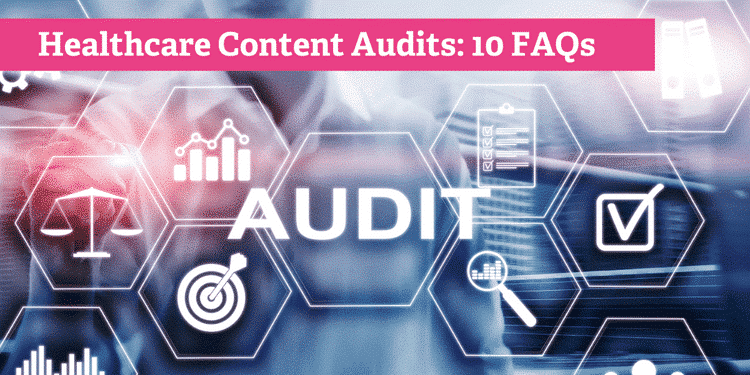
How to Write a White Paper That Builds Brand Awareness and Trust With Healthcare Providers
Think of a white paper as a choose-your-own-adventure solution to the question: What do I put at the top of my B2B healthcare funnel?
That’s because the way you approach your white paper can be as varied as the expertise of the busy providers you’re trying to reach.
And whether you want to share original research, educate providers or help them understand how to apply curated information to their jobs, a well-written white paper can help you:
- Grow brand awareness
- Get in front of decision-makers
- Build trust with your existing audience
How’s that for a hard-working piece of marketing content?
In this article, we’ll dive into:
- What makes a great B2B healthcare white paper
- The 2 essential questions you need to ask before starting one
- The BIG mistake B2B healthcare companies often make with their reports
- And the even BIGGER question … to gate or not to gate
The Anatomy of a Great B2B Healthcare White Paper
Let’s start with the 6 parts of a great B2B healthcare white paper.
Include these sections in your report:
- Title: Write a two-part hook that draws in your audience
- Preview Content: Create a good ol’ fashioned table of contents
- Executive Summary: Tell ‘em what you’re gonna tell ‘em
- The Details: Paint your white paper’s story through lead items and bullet points
- Summary: Wrap up your white paper in an empowering bow
- CTA: Gently encourage your readers to take the next step
Now let’s go through the how-tos of each section.
-
Title
- Start your white paper with a great hook — through the primary title and subtitle.
- Use your main title to set up your paper’s topic and follow it up with a descriptive subtitle that homes in on the specifics.
Here are a couple of good examples:
- Writing About Difficult Healthcare Topics:
What we talk about when we talk about healthcare is hard. Here’s how we can do it better. - Rethinking Your Email Marketing in 2022:
A Quick Guide to Success
-
Preview Content
- Break up your lead items — or main points — by page number and include a brief description of each. Essentially, you’re creating a table of contents for your paper. (You can also hyperlink from here to each section if you’d like.)
CONTENTS:-
[TOPIC] Page 3
[Short 1-2 sentence description]
-
[TOPIC] Page 5
[Short 1-2 sentence description]
For example:
ADDICTION Page 3Share information about substance use disorders with sensitivity and care. Find the correct terminology and get tips for ensuring your content is empathetic and up to date.
-
- Break up your lead items — or main points — by page number and include a brief description of each. Essentially, you’re creating a table of contents for your paper. (You can also hyperlink from here to each section if you’d like.)
-
Executive Summary
- Summarize your white paper.
- Keep your summary short. Tell the healthcare provider who’s downloaded your report what they’re about to read — and do it in 5 sentences or less.
-
Details
- Get into the nitty-gritty of your white paper using lead items, followed by bullet points supporting each lead item.
- Lead Items: These are your main recommendations, tips, tools or data that point back to your white paper’s theme. (And they’re what you mapped out in the Preview Content section above.) We recommend including 5-7 lead items in your paper.
- Bullet Points: Support each lead item with 3-7 bullets.
- For example, if one of your lead items was:
MENTAL HEALTH: 5 TIPS TO ENGAGE YOUR AUDIENCE, then create 5 bullet points below it. Each bullet should contain a tip to engage your audience about mental health.
- For example, if one of your lead items was:
- Quotes [Optional — but highly recommended]: Adding quotes from other healthcare industry experts to support your main points — or lead items — can add even more credibility to your report.
Hot tip: Citing research in this section is important as it builds data to support your paper’s conclusions. It doesn’t have to be your own research — just be sure to cite your sources.
- Get into the nitty-gritty of your white paper using lead items, followed by bullet points supporting each lead item.
-
Summary
- Add a conclusion that makes the healthcare provider reading it feel empowered by what they’ve just learned. For example: “Now it’s time to put it all together. Take these tips and examples and help your organization soar to email marketing success in 2022.”
-
CTA
- Give your reader information on the next steps. Don’t “sell” here — this area is for providing helpful information about what your reader can do to learn more.
- Here are a couple of examples:
“Need help with [insert topic of white paper here]? Don’t hesitate to reach out.”
Or
“Follow us on LinkedIn and Twitter for more [topic of your white paper] insights.”
- Here are a couple of examples:
- Give your reader information on the next steps. Don’t “sell” here — this area is for providing helpful information about what your reader can do to learn more.
How to Write Your B2B Healthcare White Paper Like a PRO
If you want your white paper to do its job well (aka, make you all kinds of popular with the in-healthcare-crowd), you’ll need to do a little prep. Here are 8 pro-tips you can incorporate as you go.
Pro-tips
Pro-tip #1: Think “snackable” when choosing a topic
Make the focus of your white paper “digestible.” Don’t attempt to write an opinion piece that covers all of cardiovascular medicine. Instead, focus on one specific — and manageable — subject (for you and your reader).
Consider sharing the results of a new clinical research study around biomarkers for heart failure or tips on lowering stress in heart patients.
Pro-tip #2: Topic troubles? Turn to your tablet
Tune into national or global happenings that provide opportunities to shine a light on your expertise. Stories outside the B2B healthcare sphere often give you the chance to add your skillful spin to a timely or familiar topic.
Examples could include news about emerging AI technology, the official end of the COVID-19 emergency or player Damar Hamlin’s collapse during Monday Night Football.
Pro-tip #3: Excessive celebration will earn you a white paper penalty
Don’t use your white paper as one big ad for your company’s product or services (something we’ve seen a lot of B2B companies doing, unfortunately — womp, womp). Your paper shouldn’t celebrate your achievements … It should showcase your expertise.
So go ahead and show off that big brain of yours through your research or a well-written editorial — not by putting your product (or service) on a pedestal.
Pro-tip #4: (Like mama said) Keep your promises
Be sure to deliver the goods that your white paper’s title — and all the marketing around it — says it will. When your paper is more hype than it is helpful, your potential for popularity will likely plunge.
As digital marketing guru Avinash Kaushik famously said, “Never let ads write checks your website can’t cash.” The same concept applies here: Don’t let your landing page write a check your white paper can’t cash.
Pro-tip #5: Ditch page count concerns
Your white paper should have as many pages as it needs to tell its full story to your intended audience, but here are some general guidelines.
- Shorter: If you’re writing for an audience of B2B healthcare marketers, keep your paper to about 8 pages or less.
- Longer: If you’re writing for academic researchers, your report should be more in-depth and, therefore, longer.
- Bottom line: But at the end of the day, your paper should be as long (or as short) as it needs to be based on its purpose and audience.
Pro-tip #6: To gate or not to gate?
When you’re using a white paper to share original research — aka, your intellectual property — we recommend gating it indefinitely. When the focus is almost anything else, we recommend gating it for up to a year before flinging those gates open.
Of course, there are exceptions. Paid advertising, for example, can potentially extend the life of your report as a high-performing lead magnet well beyond a year. So look at the analytics. If it makes sense to keep it gated longer than (or less than) a year, then do that — always follow the data.
Pro-tip #7: Throw your paper a party
Announce your white paper in a press release. Create Instagram Reels and TikTok videos. Go live on LinkedIn and Facebook. Create a free webinar around your paper to share your insights and/or invite a guest expert. Go all out.
White papers just wanna have fun … so be sure to give yours a celebration your intended audience won’t soon forget.
Pro-tip #8: Before you begin … Ask these questions
Before you start your white paper, ask:
- “How will this help my audience — readers, customers, decision-makers?”
- “What will this do to help my business?”
If the topic or intent of your paper doesn’t gel with those answers, don’t waste your time creating it. (Pro-tip 8a: This is a great litmus test for ANY marketing content you’re considering creating.)
Who Are You REALLY Writing For?
When deciding on an angle for your white paper, understand the difference between the healthcare audience who’ll be reading it and the healthcare audience who’ll be making a decision about it.
Very often, white papers are aimed at directors, who then take it to their VPs and say, “Hey, this company is interesting. They may be a potential partner for us.” So you’ll get the most bang for your white paper buck by ultimately helping those final VP decision-makers understand how the information in your paper will help them.
You’ve done good by your white paper when providers get a new perspective on how your company thinks about and approaches the problem-solution dance — and when it shows them they’d be in the right hands with you.
So … ready to get your white paper on?
Just click below to download our free cheatsheet: A step-by-step checklist for creating a great B2B healthcare white paper.




